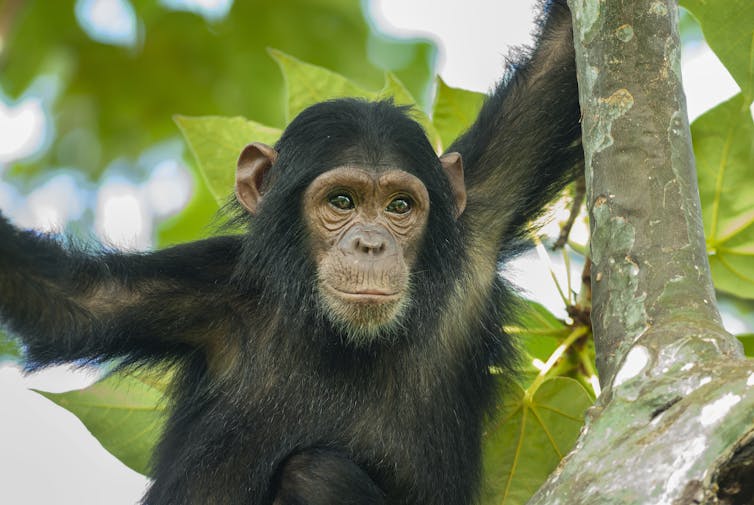Most people would call it a “field mouse,” but a scientist would ask, “Was it Peromyscus maniculatus? Or Peromyscus leucopus?”
Scientists use a system of complicated-sounding names to refer to everyday creatures, a practice heavily lampooned in the Warner Bros. cartoons featuring the Road Runner and Wile E. Coyote – or, respectively, Accelleratii incredibus and Carnivorous vulgaris.
As a biologist, I use these seemingly odd names myself and help my students learn them. For most people it’s a huge effort, like learning a second language. That’s because it is.

A chimpanzee, otherwise known as Pan troglodytes.
guenter guni/E+ via Getty Images
Humans, skunks and maple trees
The science of naming and classifying organisms is called taxonomy. Scientists do this so they can be as precise as possible when discussing living things.
The first word in an organism’s name is its genus, which is a group of related species, such as Panthera for lions, tigers and leopards.
The second word is the specific name identifying the species, usually defined as a population that can reproduce only with each other, such as Panthera leo for lion.
Every two-word combination must be unique. Called binomial nomenclature, this naming system was popularized by Swedish naturalist Carl Linnaeus in the 1700s. So, humans are Homo sapiens, the red maple Acer rubrum, garlic Allium sativum, and the eastern spotted skunk Spilogale putorius.
Today, biologists maintain huge databases containing the taxonomic names of plants, animals, fungi and other organisms. For instance, one of these databases – the Open Tree of Life project – includes over 2.3 million species.
The scientist who discovers a species usually names it by publishing a formal description in a peer-reviewed journal. From there, the name makes its way into the databases. From then on, scientists always use that name for the organism, even if it turns out to be misleading. For example, many fossils were originally given names containing the Greek root “saur,” which means lizard – even though paleontologists later realized dinosaurs were not lizards.

The archosaur group includes dinosaurs and also today’s birds and crocodiles.
Orla/iStock via Getty Images Plus
Snobbery isn’t the issue
To most people, these names sound inscrutable. Particularly nowadays, as science becomes more open and accessible to everyone, such arcane vocabulary can come across as old-fashioned and elitist.
Given the current backlash against “elites” and “experts” in every field, that’s a serious charge. But in a roundabout way, this seemingly exclusive practice is really a story of inclusiveness.
As modern science began taking shape in Europe during the 1600s, scientists had a problem. They wanted to read and be read by others, but language got in the way. French scientists couldn’t read Swedish, Swedes…



